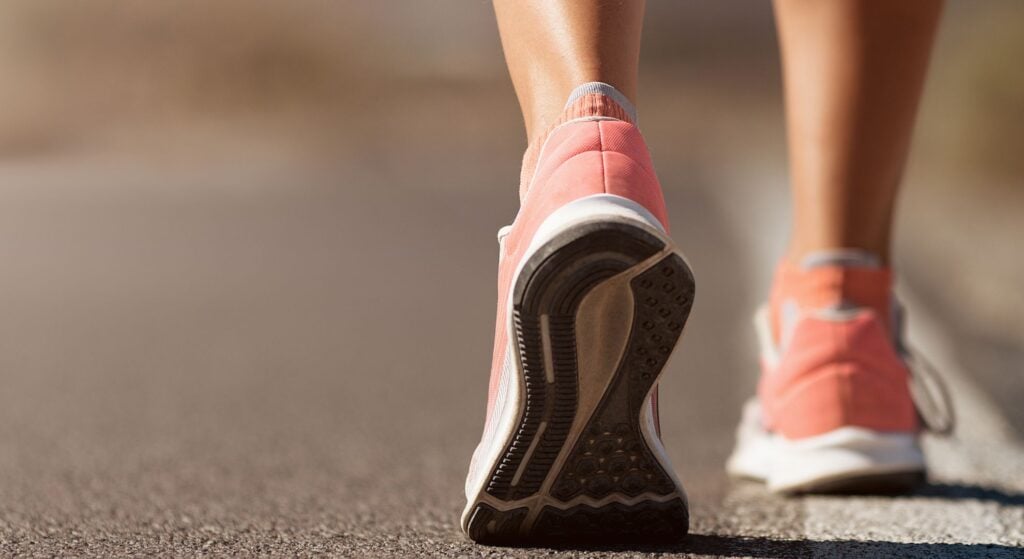Losing Weight with Cycling, Walking or Running

When it comes to shedding those extra pounds and achieving a healthier lifestyle, there is no shortage of exercise options available. Indoor cycling and walking have emerged as popular choices among enthusiasts who want to start with a healthier lifestyle, offering effective and accessible forms of physical activity. These methods provide unique advantages and can be customized to suit individuals with different fitness levels. In this blog post, we will delve into the benefits of losing weight with cycling and walking. Join us as we uncover how you can optimize your weight loss journey with these engaging ways of exercise!
Table of content
Introduction to Weight Loss with Cardiovascular Exercises
Cardiovascular exercises, such as cycling, walking, and running, are highly effective for weight loss and should be an integral part of any balanced fitness routine. These activities elevate your heart rate, increase calorie expenditure, and promote fat burning, making them ideal for shedding excess pounds. Whether you prefer the low-impact nature of cycling, the accessibility of walking, or the high-intensity nature of running, incorporating these exercises into your routine can yield significant weight loss results.
By engaging large muscle groups and boosting your metabolism, cardiovascular exercises not only help you burn calories during the workout, but also contribute to increased calorie burn throughout the day. Moreover, they offer numerous additional health benefits, such as improved cardiovascular health, increased endurance, and enhanced mood. To achieve sustainable weight loss, it’s crucial to adopt a well-rounded approach that combines cardiovascular exercises with strength training, flexibility work, and a balanced diet. This holistic approach ensures that you not only lose weight but also build muscle, improve overall fitness, and maintain long-term health.
What burns more calories walking or Biking?
Both walking and cycling are effective ways of exercise that can help you burn calories and lose weight. But the question remains: Do you burn more calories walking or riding a bike? The number of calories you burn while walking or cycling depends on several factors, including your weight, the intensity of your workout, the duration of your workout and your overall fitness level.
In general, a person burns more calories cycling than walking, because cycling has a lower impact on the joints, allowing you to train longer and more intensely than walking. For example, a 70-kg person burns about 240-290 calories cycling for 30 minutes at an average speed of 20 mph. While the same person burns about 130–160 calories with 30 minutes of walking at a speed of 5 km/h.
Of course, the difference in calorie burn between cycling and walking can depend on several factors, such as the terrain you are cycling or walking on and the intensity of your workout. Climbing a hill on a bike both outdoors and indoors on a stationary bike can increase calorie burn considerably. The same goes for walking on a soft surface such as sand or grass, or increasing the intensity by running. So when do you burn the most calories: walking or cycling?

Losing weight with cycling
Cycling offers several benefits when it comes to weight loss. Firstly, its low impact nature makes it an ideal exercise for individuals with joint issues or those seeking a low-impact option. Unlike activities like running, which can put stress on the knees and joints, cycling provides a gentler workout while still allowing for an effective calorie burn.
Additionally, cycling enables individuals to engage in long-duration workouts, which can be beneficial for weight loss. Whether it’s a leisurely bike ride or an intense cycling session, the longer duration allows for a sustained calorie burn and increased fat loss.
Furthermore, cycling engages various muscle groups, making it a full-body workout. While primarily targeting the lower body muscles like quadriceps, hamstrings, and glutes, it also engages the core and upper body muscles for stability and balance. This comprehensive muscle engagement not only helps in toning the body, but also increases the overall calorie expenditure during the exercise.
Another advantage of cycling is the ability to increase intensity gradually. Whether you’re a beginner or an experienced cyclist, you can adjust the intensity according to your fitness level. This flexibility makes cycling suitable for individuals at different stages of their weight loss journey. This makes it an effective exercise option for burning calories and shedding excess pounds.
Cycling for weight loss: Choose your form
- Indoor Cycling
Indoor Cycling, often done in group fitness classes, provides a higher level of resistance and intensity compared to a home trainer. Motivated by instructors and music, Indoor Cycling is an engaging way to burn calories and enhance endurance. Properly alternating exercise and relaxation is key to maximizing weight loss with Indoor Cycling. - Recreational Cycling
A popular and accessible way to cycle, enjoying the outdoors, fresh air, and scenery. Riding a bike outside provides a low-intensity workout but allows for longer durations, contributing to weight loss over time. - Road Cycling
- Covering longer distances on a road bike, road cycling, requires stamina and training. It is an excellent option for burning calories and improving endurance. Gradually building up your training and allowing for proper rest is important for effective weight loss.
- Cardio Training on a Home trainer
Using a stationary bike at home, home trainers offer the convenience of indoor cycling regardless of weather conditions or time of day. Following a challenging exercise program on a home trainer can help burn calories effectively and improve fitness.

Losing weight with walking
Walking or hiking has gained popularity as an effective form of exercise for weight loss. Here are tips to maximize your results:
- Gradual progression: Start with shorter distances and a slower pace, gradually increasing both distance and speed. This approach helps prevent injuries and allows your body to adapt.
- Intensity boost: Once you’re comfortable walking, challenge yourself by tackling hilly terrains or walking on sandy beaches. These variations increase the intensity of your workout and enhance calorie burn.
- Consistent routine: Establish a regular walking schedule to form a habit and maintain motivation. Aim for at least three walking sessions per week to keep the momentum going.
- Extend duration: As your fitness level improves, gradually extend the duration of your walks. Aim for a minimum of 30 minutes per session, but feel free to go longer if desired.
- Add variety: Keep your walking routine engaging by introducing variety. Explore different routes, change the scenery, or listen to music or podcasts during your walks. These elements make your workouts enjoyable and prevent monotony.
By following these tips, you can optimize your walking or hiking routine for weight loss while ensuring safety and long-term adherence to your fitness goals.
Running for weight Loss
Running offers numerous benefits that make it an effective exercise for weight loss. Its high-intensity nature allows for a significant calorie burn, making it a potent tool for shedding excess pounds. Running also has the potential to improve cardiovascular health, enhance endurance, and boost overall fitness levels.
One of the key advantages of running is its exceptional calorie-burning potential. It is a highly efficient cardiovascular exercise that engages multiple muscle groups simultaneously, leading to an increased metabolic rate during and after the workout. This means that even after you finish your run, your body continues to burn calories at an elevated rate, supporting weight loss efforts.
Choosing the right exercise for weight loss
The actual calorie burn will depend on various factors such as intensity, duration, individual weight, and effort exerted.
Running is generally considered a higher-intensity exercise, which can result in a higher calorie burn per minute compared to cycling. But, when we look at Indoor Cycling, it can provide an intense cardio workout and can burn a significant amount of calories when performed with sufficient effort and resistance.
The exact calorie burn will vary based on factors such as the individual’s weight, fitness level, and the intensity at which the activities are performed. To get a more accurate estimate of the calorie burn for your specific circumstances, you may consider using fitness trackers or online calculators that take these factors into account.
You don’t háve to choose
Remember, walking, running and indoor cycling can be effective for weight loss when incorporated into a well-rounded fitness routine. It’s important to choose the exercise that you enjoy and can maintain consistently over time. Keep track of your progress in apps like Strava, to keep motivated.
Adding variety to your exercise routine is essential for preventing boredom, breaking through plateaus, and maximizing your fitness gains. Combining cycling with walking, for instance, effectively allows you to target different muscle groups, challenge your body in new ways, and maintain motivation.
Want to know more about losing weight with cycling indoors?
Then be sure to read this blog about losing weight.
